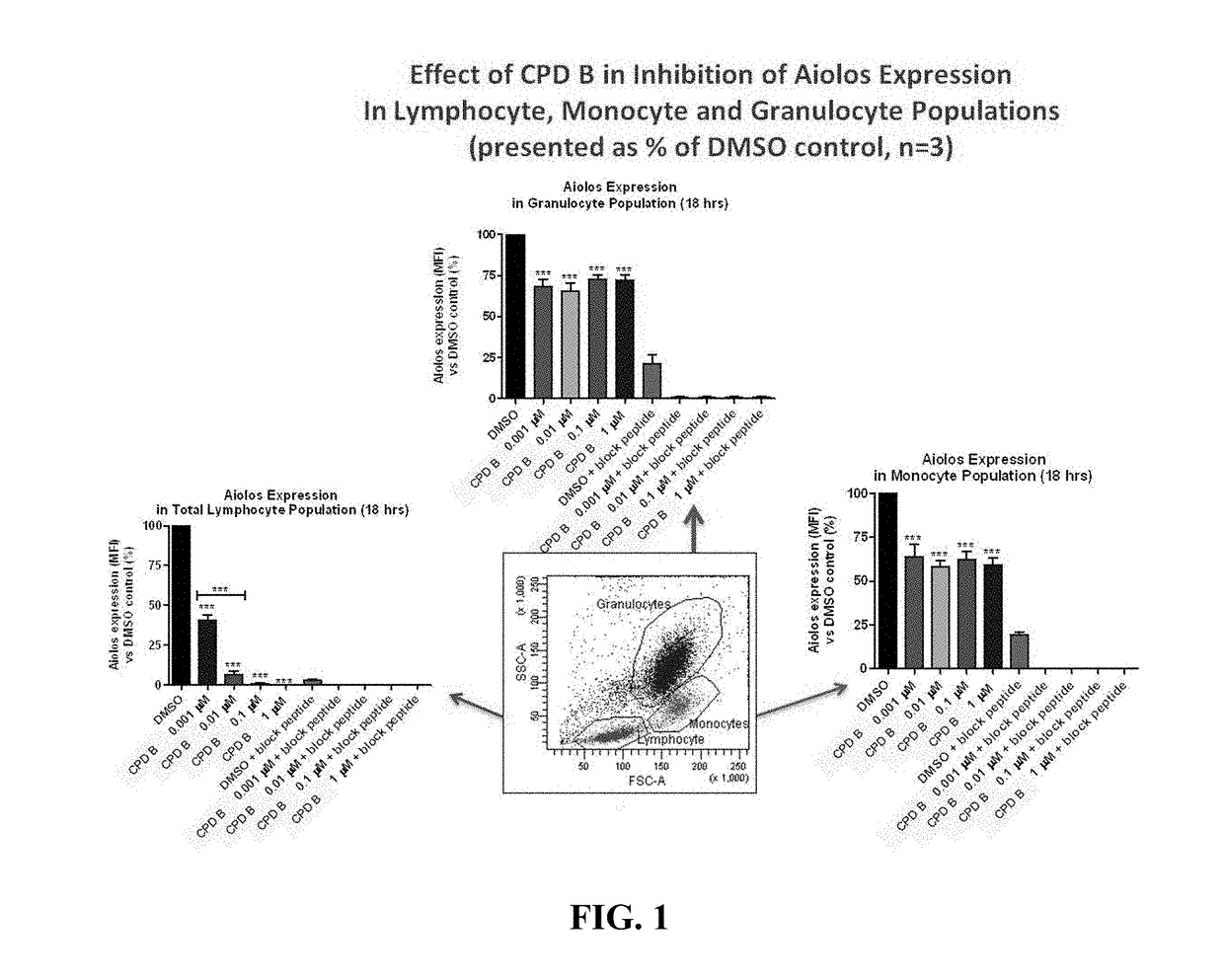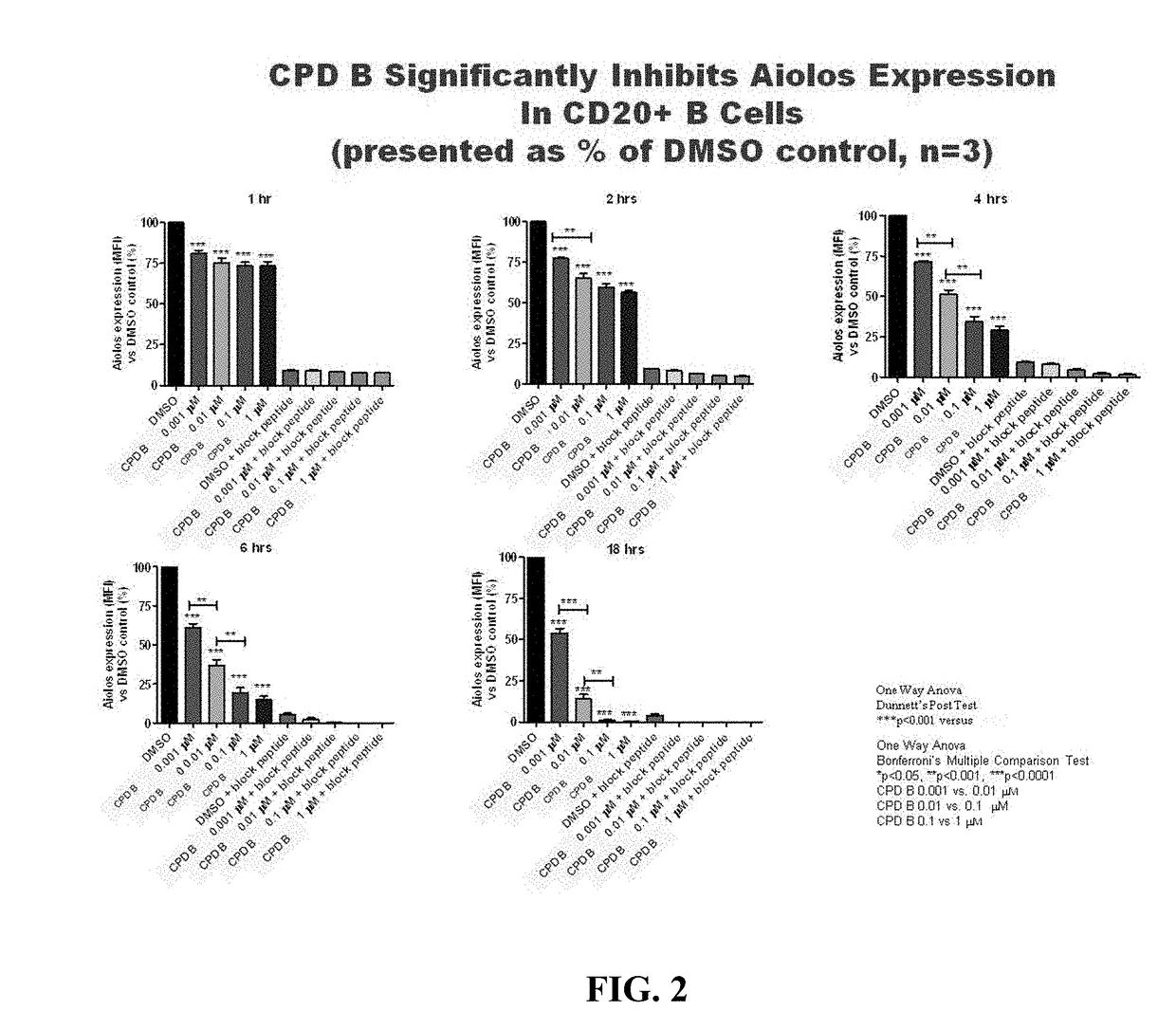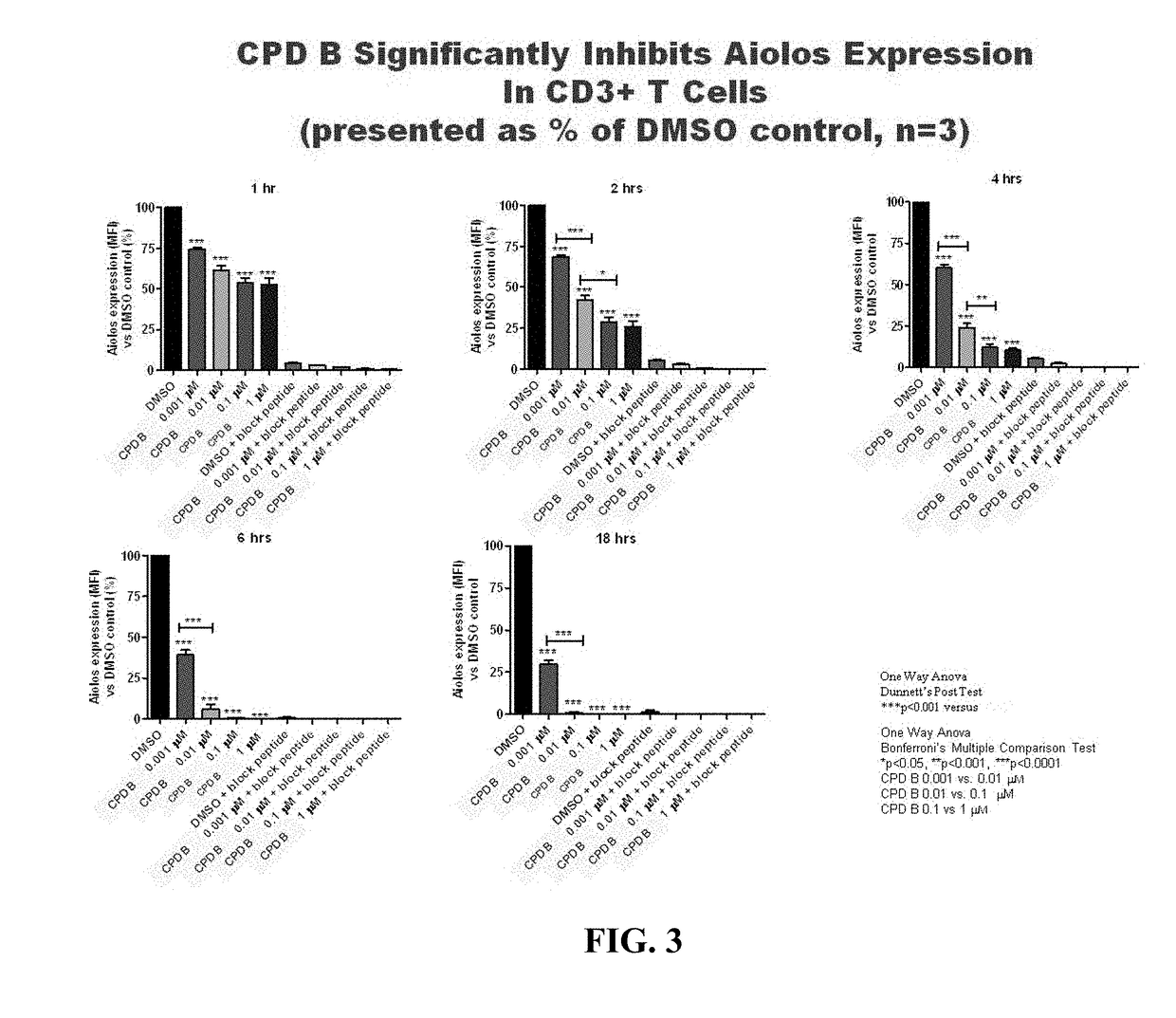Methods for determining drug efficacy using cereblon-associated proteins
a technology of cereblon and associated proteins, which is applied in the field of immunomodulatory compounds, can solve the problems of limited treatment options, limited treatment options for cancer, and large unknown extent of human leukemia
- Summary
- Abstract
- Description
- Claims
- Application Information
AI Technical Summary
Benefits of technology
Problems solved by technology
Method used
Image
Examples
Embodiment Construction
6.1 Definitions
[0153]As used herein, and unless otherwise specified, the terms “treat,”“treating” and “treatment” refer to an action that occurs while a patient is suffering from the specified cancer, which reduces the severity of the cancer, or retards or slows the progression of the cancer.
[0154]The term “sensitivity” and “sensitive” when made in reference to treatment with compound is a relative term which refers to the degree of effectiveness of the compound in lessening or decreasing the progress of a tumor or the disease being treated. For example, the term “increased sensitivity” when used in reference to treatment of a cell or tumor in connection with a compound refers to an increase of, at least a 5%, or more, in the effectiveness of the tumor treatment.
[0155]As used herein, the term “immunomodulatory compound” or “immunomodulatory drug” refers generally to a molecule or agent capable of altering the immune response in some way. Non-limiting examples of immunomodulatory com...
PUM
 Login to View More
Login to View More Abstract
Description
Claims
Application Information
 Login to View More
Login to View More - R&D
- Intellectual Property
- Life Sciences
- Materials
- Tech Scout
- Unparalleled Data Quality
- Higher Quality Content
- 60% Fewer Hallucinations
Browse by: Latest US Patents, China's latest patents, Technical Efficacy Thesaurus, Application Domain, Technology Topic, Popular Technical Reports.
© 2025 PatSnap. All rights reserved.Legal|Privacy policy|Modern Slavery Act Transparency Statement|Sitemap|About US| Contact US: help@patsnap.com



